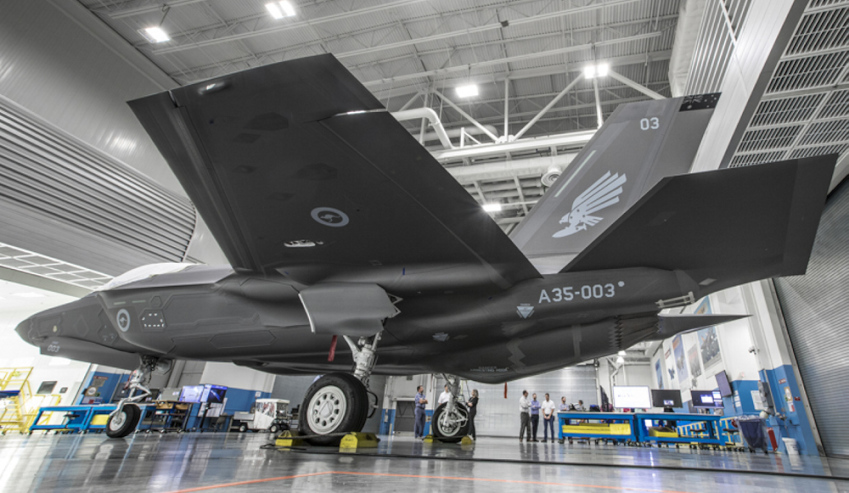Australia’s participation with the global F-35 program has seen Queensland-based TAE Aerospace establish itself as the regional hub for complex engine maintenance on Australian and allied F-35s supporting the development of sovereign industry capability.
To continue reading the rest of this article, please log in.
Create free account to get unlimited news articles and more!
As part of the broader national preparation for the Australian operation of the fifth-generation F-35, TAE Aerospace has established itself as a leader in the engine and turbine maintenance ecosystem.
The company's new Turbine Engine Maintenance Facility (TEMF) in Bundamba, south-east Queensland will enable deeper-level maintenance, where the F135 engine modules for the F-35 are disassembled, repaired and reassembled for testing.
"This is an exciting opportunity for TAE to design and build a speciality maintenance and manufacturing facility, with two areas of focus, one dedicated to F135 engine maintenance in partnership with CASG and Pratt & Whitney, and the second focusing on maintenance of existing engines from the Hornet, Super Hornet, Growler and Abrams platforms," Andrew Sanderson, chief executive and managing director of TAE Aerospace said.
As part of establishing this leading-edge capability, TAE has partnered with original equipment manufacturer (OEM) for the engines and turbines, world leading military aircraft engine manufacturer Pratt & Whitney, to establish a centre of excellence, not only for Australian industry, but equally as a critical cog in the global F-35 sustainment and logistics network.
Once completed, the building will have 15,620 square metres of floor space, which is an 80 per cent expansion of the current footprint, which will see five key work areas established, including:
- F135 engine maintenance, repair, overhaul and upgrade (MRO&U) and regional warehouse area – ready Q4 FY19;
- Existing engine MRO&U and warehouse area for engines from Hornet (F404), Super Hornet, Growler (F414) and Abrams tank (AGT1500), plus expansion space – ready Q2 FY20;
- Engine component repair area including, cleaning, non-destructive testing, machining, welding, grinding, heat treatment – ready Q2 FY20;
- Advanced manufacturing facility for aluminium vacuum brazing based chassis production for the F35 aircraft – ready Q2 FY20; and
- Administration and engineering office complex – ready Q2 FY20.
The specially designed, secure facility will provide optimised work areas for improved production flow, which is climate controlled throughout, while implementing an open plan design to maximise the use of space and equipment.
This leading-edge capability also provides the opportunity for Australia to further develop it's sovereign industrial capability through collaboration with key global partners on the F-35 project. This expands beyond just the OEMs, like Lockheed Martin and Pratt & Whitney, to the global operators of the weapons system, particularly allies including the US, Japan and South Korea.
"As key industry partners for the global F-35 project, it has meant that industry as a whole has had to be globally competitive, that is across both manufacturing and sustainment, it is a great vote of confidence in Australian industry and its capability to compete against global heavyweights," Sanderson explained.
Enhancing these critical regional partnerships at the military-to-military level provides Australia's domestic industry with the opportunity to integrate and collaborate with F-35 industry partners in allied countries as a means of enhancing industry development, collaboration and Australian industry content in global supply chains beyond the F-35.
Examples of such global integration and participation on the back of success with the F-35 program have been seen with companies like TAE, highlighting the adaptability of Australian industry and the role it can play in supporting broader platforms.
Sanderson reinforced this, saying, "The biggest growth opportunity for TAE is moving from an initial depot capability, to then begin competing for the broader regional F135 maintenance projects. Building on that enables us to then compete for excess maintenance and sustainment work coming out of the US and even broader global F-35 partners."
Meanwhile, the partnership with a global prime like Pratt & Whitney further expands the avenues for Australian industry development available to TAE, as the Pratt & Whitney order book extends beyond military aircraft engines for some of the world's leading combat and strategic airlift aircraft to include civilian aerospace engines for a range of civilian aircraft.
"Working on the only fifth-generation engine in the F135 is a game changer for Australian industry, and TAE is proud to be part of the Australian team supporting the F-35 at home and abroad," Sanderson said.
The F-35 program is not only a global military project, it is frequently serving as a test-bed for greater international industry collaboration and integration and is expected to do so well into the future.

 Login
Login







